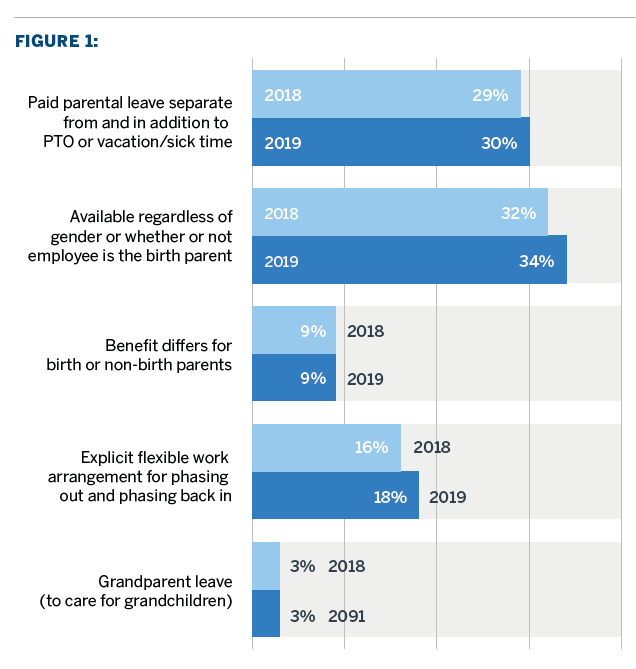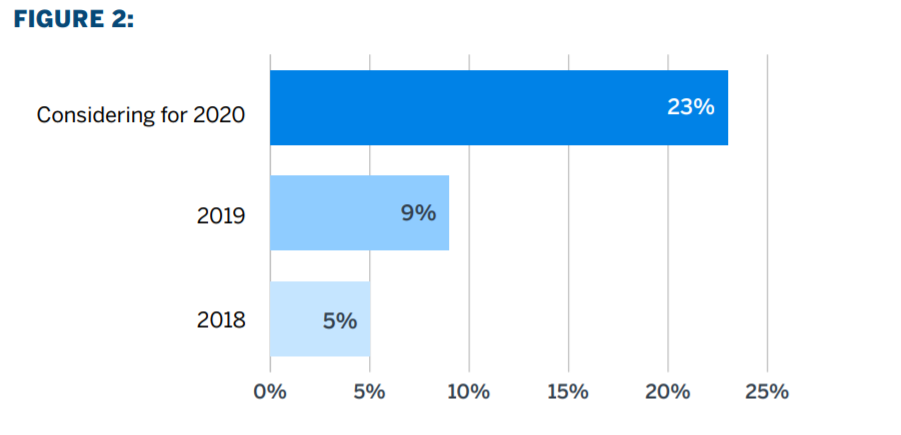With an increasingly competitive talent market and changing employee demographics, employers are taking a closer look at their total benefits packages to understand what is driving prospective employees' wants and needs, particularly relating to parental leave. State and local laws are also changing quickly, creating a regulatory maze that can be difficult to navigate. Milliman conducted a What's Trending benefits pulse survey specific to parental leave benefits to get a sense of what employers are currently doing and considering in this space.
Parental leave benefits: Results
The results of a 2019 Milliman pulse survey confirmed that many employers are experiencing the issues of complex compliance as a result of changing laws and a competitive talent market demanding more robust leave benefits. Despite these pressures, there was little change in action from 2018 to 2019. Similar proportions of employers to those shown in Figure 1 are considering changes in 2020. Both parental leave benefits that are available regardless of employee gender or birth parent status and paid parental leave separate from vacation/sick time are popular for a significant minority among responding organizations.

For those who responded, the number of weeks of available leave increased for both birth and non-birth parents from 2018 to 2019 for the 6-11 weeks and 12+ weeks categories. Yet the percentage of pay decreased slightly.
Family leave benefits
More employers are considering paid family leave benefits in 2020 that are separate from, and in addition to, paid time off (PTO) or vacation/sick time, and above and beyond the care for newborns/newly adopted children. While only 9% of respondents in 2019 (5% in 2018) said they currently offer this benefit, 23% of respondents said they were considering offering it for 2020. Similar to parental leave, the number of weeks offered is trending up while the percentage of pay is trending down.

Conclusion
With competitive and regulatory pressures on employers to shore up parental leave programs, relatively few are taking definitive action. Of those that are, mitigating the potentially significant cost increases by lowering the percentage of pay while increasing the number of weeks of leave is a common strategy. As state and local laws continue to evolve, employers will need to pay special attention in order to ensure compliance.
This article first appeared in the Health and Group Benefits News and Developments: April 2020.
If you would like to receive the Health & Group Benefits newsletter directly, send an email here.